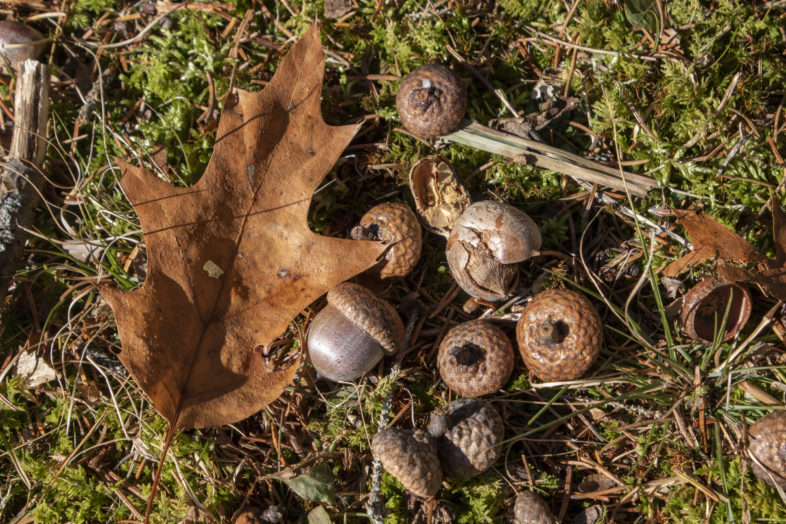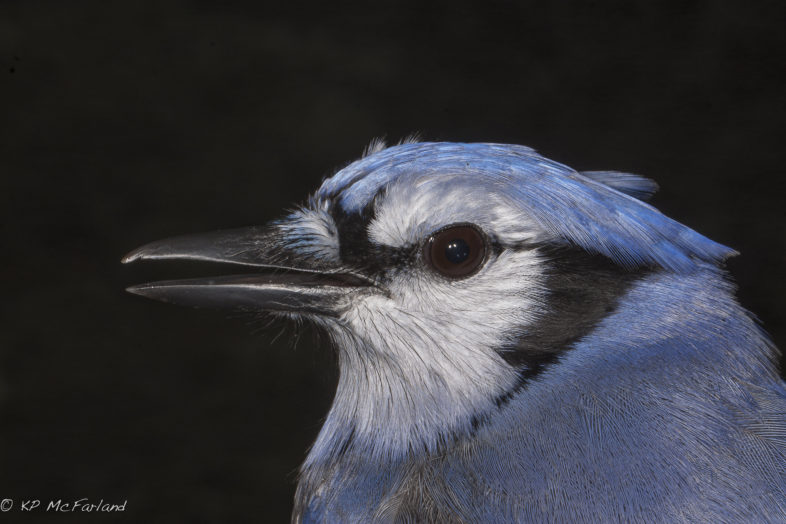Although an opportunistic omnivore, the Blue Jay’s diet is three-quarters vegetarian: acorns, beech nuts, and other nuts and seeds are its staple food. In the summer its diet becomes mostly insectivorous, and at all times of the year it is a sharp-eyed scavenger. The Blue Jay has a habit of taking food and storing it in a crevice, underground or other hiding places. For this, they are also known as “engineers of the forest.” Sometimes they forget to come back to get the stored nuts and seeds allowing them to grow. The jays are planting new trees and expanding the forest.

Northern Red Oak acorns are bountiful in many places this year. These were laying on the ground all around us in the forest as jays called back and forth likely collecting and caching them away. / © K.P. McFarland
In this episode of Outdoor Radio, we begin on a carriage road in middle of the Marsh-Billings-Rockefeller National Historical Park looking and listening for Blue Jays in stand of Red Oak trees. These birds migrate south for the winter, sometimes. But, when there is an abundant source of food, like there is the acorn crop this year, the jays are likely to stay in Vermont. Learn how many acorns a blue jay can carry in their throat pouch and discover that, despite their name, their feathers aren’t really blue.
Listen to the Show
Learn More
- Check out images, sounds and a map of blue jay sightings on Vermont eBird and add your sightings too.
- Learn more about blue jays from Cornell Lab of Ornithology’s All About Birds and the Vermont Atlas of Life Breeding Bird Atlas.
Outdoor Radio is produced in collaboration with Vermont Public Radio.


So I learned something. Blue Jays aren’t blue. Interesting program.
Always a great learning opportunity for the family. We did not realize Blue Jays are a member of the Covid species.
Should be “Corvid”